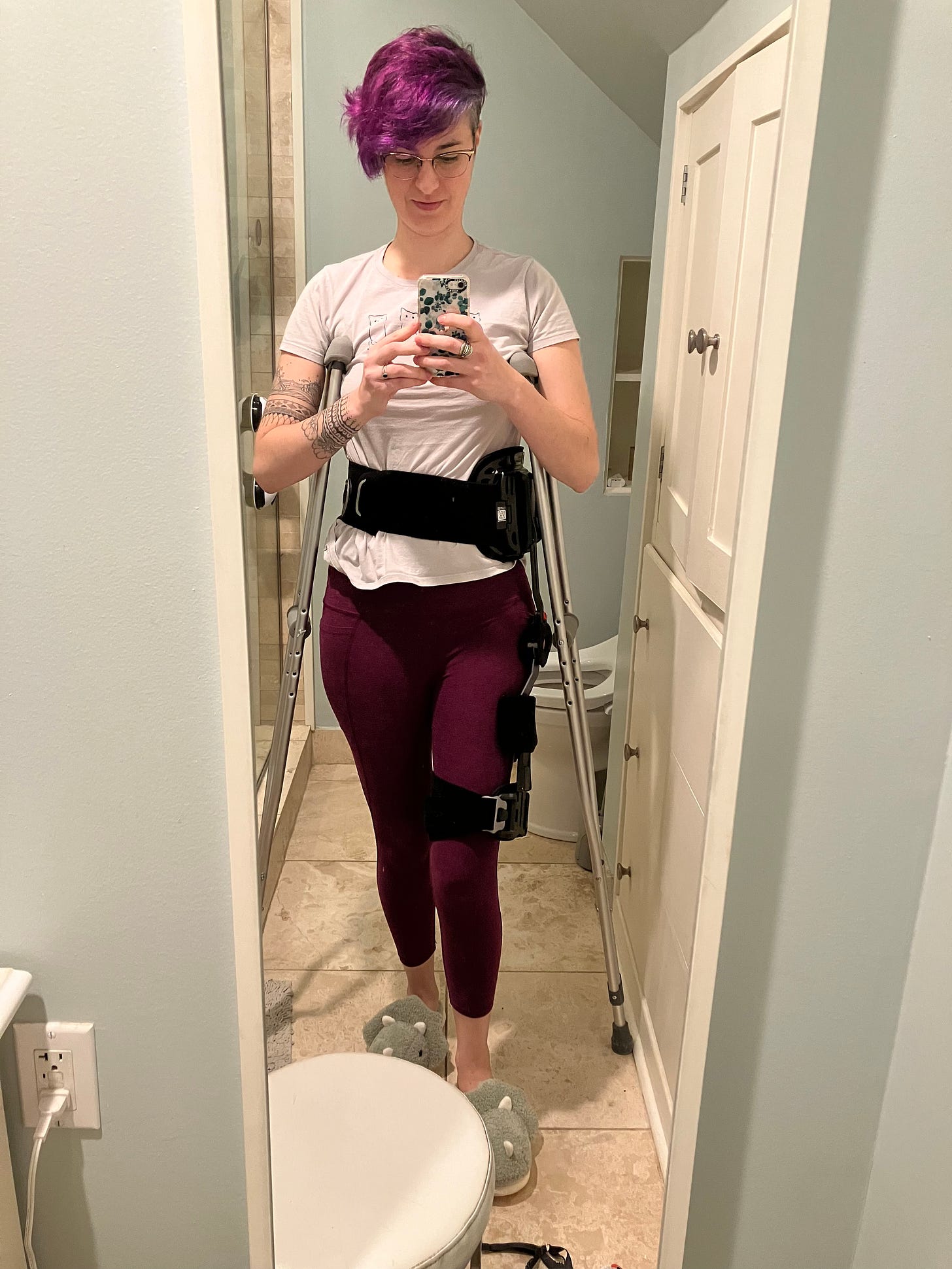Hamster wheels and treadmills both get used a lot in metaphoric language to express the feeling of being trapped doing the same thing over and over again. And I don't think it's a coincidence that both those devices are meant to provide the user with exercise.

I'm back in physical therapy again for the ninth or tenth time in the last six years. A new facility, a different physical therapist, but the same old exercises with the inexplicable names: bird-dog, dead bug, open book. Ok, they're not totally inexplicable if you see the actions themselves, but I still can't help wondering who came up with them and then standardized them?
I probably shouldn’t be surprised that physical therapy got a real foothold thanks to two major causes: the two World Wars and polio outbreaks in the late 19th and early 20th century. Wounded soldiers needed rehabilitation as did partially paralyzed children, and while surgery can repair muscle and reknit muscle and cartilage, the real recovery requires months of exercise and strengthening in the aftermath of injuries or maladies.
I've done PT before and after joint surgeries, for sports injuries, because my inflammatory arthritis acts up. Writing a script for another round is one of my rheumatologist's favorite activities. Don't get me wrong, I love my rheum and I've had a lot of very knowledgeable and helpful PTs. And it's also ... pretty boring.

Maybe that's because in the last seven years I've had five surgical procedures with varying impacts on my mobility and muscle mass, so every time I manage to make a little progress, I seem to backslide whenever something new comes up. This, as you can imagine, is extremely frustrating. Especially because I tended to be an active person in the before times. I did kickboxing and sword fighting and competed in triathlons. My exercise regimen was pretty varied. Yoga classes, weight training, running, swimming, etc. I've not yet been able to get back to any of those things in the way I'd like to. Instead, I'm stuck going to PT.
And it helps, it does, as much as my online pilates classes help, as much as my daily walks help. One of my favorite teachers, Zoe Mckenzie, preaches the good word of "any movement counts." But at the same time, it's hard to have my movement limited to things that won't hurt my joints (or, let's be honest, will only hurt them a little bit, not enough to trigger a flare like that one shadow boxing class I took that had me laid up for a week, oops).
Every time I go back to PT, no matter how nice and helpful the physical therapist, my grief resurfaces. This isn't what life used to look like.
Interestingly, there are some 24 species of wild hamster, and the majority of them are not temperamentally suited to becoming pets and running on wheels. The Syrian hamster, collected on a wild-sounding expedition in 1930, formed the basis for the beginning of the pet trade. Later, the winter white dwarf hamster and a couple other species were added in, and now hamsters are found in children's homes all over the world.

Do any of them, scurrying away on their wheels, ever dream of running through grass and mulch and smelling the night air? Do they have some sense that life was different before domestication? I know I'm imposing my human views on sentient cottonballs, that I'm using them to make a point. But the point remains: sometimes we run on wheels (or treadmills) because that's what we love, like the wild mice and rats and frogs(!?) that used wheels placed in outdoor urban areas. (The amazing study is called “Wheel Running in the Wild,” and yes, it has PICTURES of the critters on their wheels.)
But sometimes, the wheel is all that's available to us. I'm lucky I have access to PT whenever I need it, that my insurance covers it. It's like having my own very specific kind of personal trainer. And also, sometimes, I just want to get back out in the wild, joint injuries be damned.

